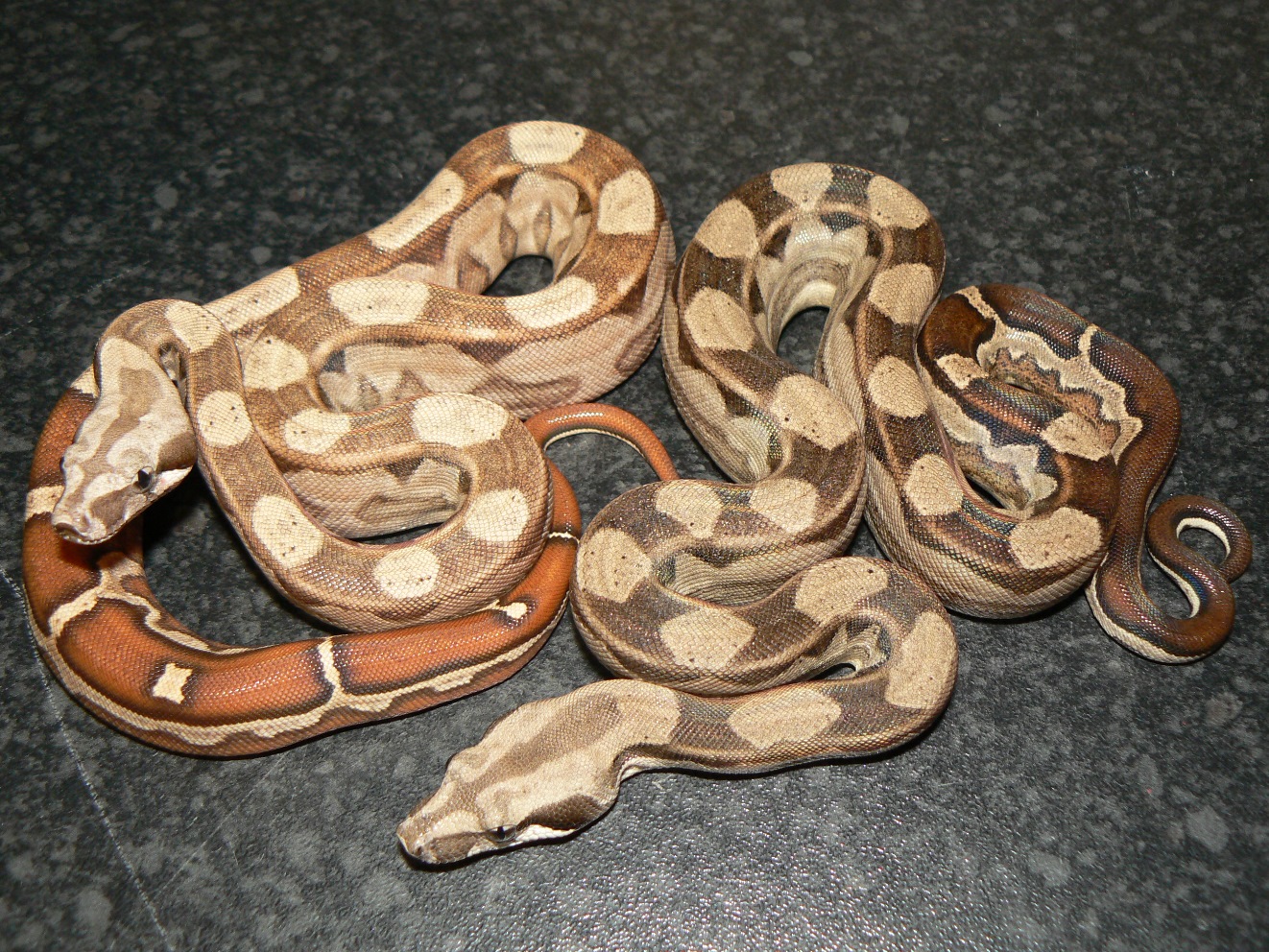Blonde T+ Albino Motley
Method of Inheritance: Simple recessive and co-dominant mutations
Appearence: Pale ‘Caramel’ background colour with reduced/absence of black pigment, generally replaced with shades of brown. Connecting dorsal pattern often displaying a striped or 'squaretail' appearance. Absence of belly speckling and 'diamond' pattern on flanks generaly joining forming a stripe.
Our Blonde T+ albino motley Boas were produced by combining the Blonde T+ albino gene with the CA motley gene.
Blonde T Positive (Tyrosinase Positive) Albinos are a colour morph with a genetic mutation that appears to exhibit an inability to complete the synthesis of melanin but can produce other melanin related pigments such as various shades of brown grey & red. This differs from T- Albinos such as Kahl & Sharp Strain in that areas that would normally be black or brown are typically white.
Newborn Blonde T Positive Albinos (as seen in the pictures below) have little or no dark pigment at all & tend to show grey pigmentation where black would normally be present. As they mature, this grey colour will develop into a dark brown.
The resulting appearance is that of an attractive Pale background colour and reduction of black pigment. I have produced litters of these boas from a het x het breeding in 2005 and 2006, on both occasions some of the possible hets and the visual T+ Albinos also exhibited a beautiful pink wash in the background colouration.
All the T Positive Albinos in our collection are from the Blonde / Zig Zag line which was originally developed in Russia. Visual T Positive Albinos from this line generally exhibit purple tongue and a striped tail which seems to be genetically independent of the T Positive appearance.
The original founder Central American Motley Boa was imported from Panama into the UK. Although very similar to the Columbian Motley Boa, these dwarf Motleys often exhibit a more aberrant pattern. The super Motley is a dark patternless Boa similar to the Columbian Motley.
Our Blonde T+ albino motley Boas are a great example of how two separate morphs can be combined to enhance the overall appearance, producing a ‘designer morph’.






